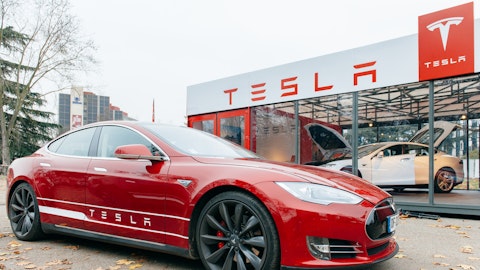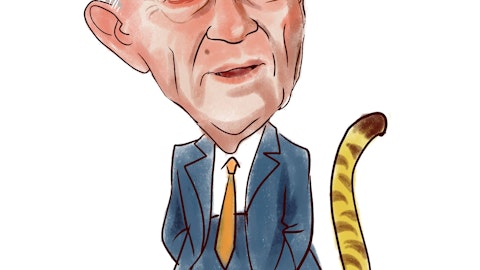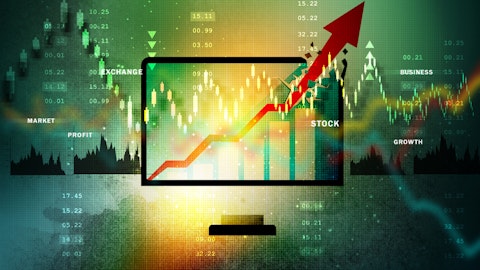Predicting the future is hard, even if you’re a financial analyst, whose job is to forecast where a company is headed after a few years. To the credit of these analysts, they use a lot of tools that help them measure the impact of each monetary, stock, and fundamentals companies have revealed about their operations and financial health. And there are a lot of analyst forecasts that were spot on. However, analysts can only work with the information they have and the trends they observed, so a new or unexpected event that the analyst has not accounted into his prediction may easily derail his estimates.
With that in mind, let’s look into what analysts have said on CNBC about Chevron Corporation (NYSE:CVX), Apple Inc. (NASDAQ:AAPL), Netflix, Inc. (NASDAQ:NFLX), and Amazon.com, Inc. (NASDAQ:AMZN) last year, as well as what happened to those companies after the projections were made.
Just before the end of 2015, Cowen and Co. analyst Sam Margolin tagged Chevron Corporation (NYSE:CVX) as a top stock pick for 2016. Margolin, who set a $122 price target on the oil giant’s stock, which represented a 34% premium at the time, touted the company’s healthy balance sheet and the small proportion of debt compared with capital spending. The analyst was also positive that Chevron Corporation (NYSE:CVX) can turn to some of its investments, such as the Permian Basin in Texas, to fuel growth, or at least offset oil production declines, amid significant oil price declines that started in the second half of 2013. He added that oil prices are set to improve in 2016.

Zadorozhnyi Viktor/Shutterstock.com
Margolin’s bullish outlook on Chevron Corporation (NYSE:CVX) and oil prices proved to be accurate. The company’s stock price seemingly rose and fell alongside the fluctuations in oil prices. The analyst gave his forecast on December 29, 2015, when the stock was trading around $91.25 per share. The stock then fell to as low as $78.98 per share on January 20, 2016, around the time that crude oil prices plummeted to below $30 per barrel. Since then, it has gradually rallied to $118.59 per share, close to the analyst’s price target given at the time when a lot of analysts are bearish on oil companies in general. Perhaps slightly related, oil prices are currently above $50 per barrel, a $20 rise from figures earlier this year.
Another company that was getting negative readings from analysts at the end of 2015 was Apple Inc. (NASDAQ:AAPL). However, BMO Capital Markets analyst Tim Long went against the general Wall Street sentiment at the time, saying that the negative view of the tech giant’s supply chain and near-term unit sales present a buying opportunity for the stock. While Long lowered his price target to $142 from $145 and cut his iPhone sales estimates, the analyst said that the sales outlook is not as negative as expected, adding that new upgrade plans for iPhones can drive the upgrade rate, which measures how many iPhone users switch to the newer models.
It turns out that the price target forecast was moved even at the start of this year. Long set Apple Inc. (NASDAQ:AAPL)’s price target at $133 in January, then at $116 in July, and at $140 in September. As for the actual stock value of Apple, the price fluctuated from $107.33 on December 21, 2015, the day of Long’s appearance on CNBC, to $90.34 on May 12, 2016, and then went up to $115 in December, with plenty of ups and downs along the way. In any case, Long’s price target, regardless of where it was, hasn’t been hit yet. As for iPhone sales, the tech giant sold 74.78 million iPhones in the fiscal 2016 first quarter ended December 26, 2015, the quarter that followed the launch of the iPhone 6s and iPhone 6s Plus, up slightly from 74.47 million in the prior-year quarter. As for the most recent quarter, the fiscal 2016 fourth quarter ended September 24, which included the three weeks that followed the launch of the iPhone 7 and the iPhone 7 Plus, 45.51 million iPhones were sold, down from 48.05 million in the prior-year quarter.
Even CNBC itself can’t help but do some forecasts, based on previous trends for stocks. Take for example Netflix, Inc. (NASDAQ:NFLX) and Amazon.com, Inc. (NASDAQ:AMZN), the two best-performing stocks in the S&P 500 in 2015 with more than 100% growth for the year. CNBC projected that both stocks wouldn’t be able to repeat their 2015 performance because they have a history of showing muted or negative growth in the year that followed the breakout year. For instance, Netflix shares fell by 7.21% in 2014 after exhibiting 297.63% growth in 2013. Netflix experienced 60.56% stock value decline in 2011 after a 218.93% growth in 2010.
CNBC was right on that one, Year to date, Netflix, Inc. (NASDAQ:NFLX)’s stock grew by 10%, while Amazon’s increased by 13.23%, compared with S&P 500’s 13.22% growth. It means that the top performers of 2015 are performing at or slightly below the average S&P 500 company. It is worth noting that Netflix and Amazon are part of FANG, an acronym coined by CNBC business pundit Jim Cramer that stands for the four best-performing tech stocks of the past few years, with F standing for Facebook Inc (NASDAQ:FB) and G standing for Google. However, Cramer kicked Netflix out of that grouping in September 2016 and renamed FANG as FAAA, with the two other A’s standing for Alibaba Group Holding Ltd (NYSE:BABA), and Alphabet Inc (NASDAQ:GOOGL). Cramer went bearish on Netflix after two consecutive missed quarters and said that Amazon’s stock is problematic, although he credited the online retailing giant for disrupting the streaming company.
Disclosure: none





